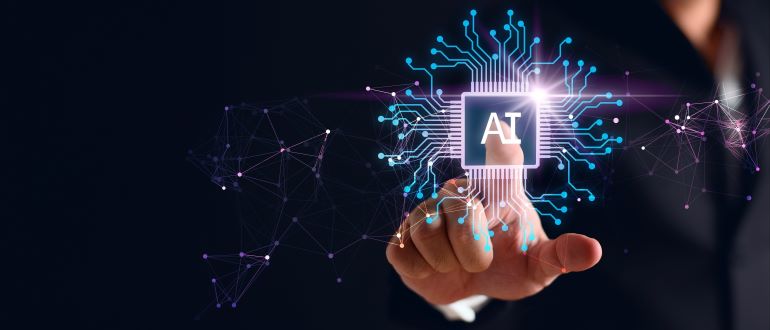
The morning stand-up meeting looked different than usual. Instead of discussing blocked tickets and infrastructure bottlenecks, our platform team was watching a developer demonstrate how they had deployed a complex microservice architecture – all through natural language interactions with our internal developer platform (IDP). No clicking through documentation, no copying and pasting from wikis, just a conversation with an AI assistant that understood our platform’s intricacies.
This isn’t a scene from the distant future – it’s happening right now in forward-thinking organizations that are integrating generative AI into their internal developer platforms. The transformation is profound, yet many teams are still trying to understand what this means for their development workflows and platform strategies.
The Evolution of Self-Service in IDPs
Remember when self-service meant digging through sprawling wikis and following step-by-step guides? Those days are rapidly fading. Traditional self-service models, while better than nothing, often led to:
- Hours spent searching through documentation
- Inconsistent implementations across teams
- Regular escalations to platform teams
- Frustration among developers trying to navigate complex systems
The introduction of generative AI is changing this landscape dramatically, but it’s not just about adding a chatbot to your platform. The real transformation comes from deeply integrating AI capabilities into the platform’s fabric.
Real-World Implementation Stories
Case Study: Financial Services Company’s AI-Enhanced IDP
A major financial services company recently transformed its IDP with generative AI. Here’s their journey:
Before AI Integration:
Average time to provision new service: 3 days
Documentation search time: 45 minutes per query
Platform team interruptions: 30+ per week
Developer satisfaction: 6.5/10
After AI Integration:
Average time to provision new service: 2 hours
Documentation search time: < 5 minutes
Platform team interruptions: 8 per week
Developer satisfaction: 8.8/10
The key wasn’t just the AI – it was how they integrated it.
Their architecture looks like this:
// Example of AI-enhanced service provisioning
interface ServiceRequest {
description: string;
requirements: string[];
team: string;
}
class AIEnhancedProvisioner {
async provisionService(naturalLanguageRequest: string) {
// Convert natural language to structured request
const parsedRequest = await this.ai.parseRequest(naturalLanguageReque
// Validate against security policies
const securityCheck = await this.validateSecurity(parsedRequest);
// Generate infrastructure code
const infraCode = await this.generateInfrastructure(parsedRequest);
// Deploy with proper monitoring
return this.deployWithObservability(infraCode);
}
}
Transformative Capabilities
1. Context-Aware Infrastructure Generation
Modern AI-enhanced IDPs don’t just understand commands; they understand context. Here’s a real example:
Developer Input:
“I need a Python microservice that connects to our PostgreSQL database and exposes REST endpoints. It should follow our standard monitoring setup.”
The AI not only generates the necessary infrastructure code but also:
Applies company-specific security policies Adds required monitoring endpoints
Configures proper logging
Sets up appropriate network policies
2. Intelligent Troubleshooting
The most impressive advancement isn’t in creation – it’s in problem-solving. Consider this scenario:
Developer: “My service is showing high latency in production”
AI Assistant: “I’ve analyzed your service metrics and noticed:
- Connection pool saturation at 92%
- Increased database query times during peak hours
- Memory usage trending upward over the past 24 hours
Based on your service pattern and our platform best practices, I recommend [Generates optimization code with explanations]”
3. Dynamic Documentation Generation
Documentation isn’t static anymore. AI-enhanced IDPs generate and update documentation based on:
Actual platform usage patterns Common error scenarios
Successful implementation examples Platform updates and changes
Implementation Guide: Adding AI to Your IDP
Step 1: Prepare Your Platform
Before adding AI capabilities, ensure your platform has:
# Example platform readiness checklist components:
- API Gateway: standardized: true documented: true
- Service Catalog:
machine-readable: true metadata-rich: true
- Monitoring:
unified: true accessible: true
Step 2: Choose Integration Points
Start with high-impact, low-risk areas:
# Example AI integration points class PlatformAIIntegration:
def init (self): self.integration_points = {
‘documentation_search’: { ‘priority’: ‘high’,
‘risk’: ‘low’, ‘impact’: ‘immediate’
},
‘service_provisioning’: { ‘priority’: ‘medium’, ‘risk’: ‘medium’,
‘impact’: ‘high’
},
‘troubleshooting’: { ‘priority’: ‘high’,
‘risk’: ‘low’,
‘impact’: ‘high’
}
}
Step 3: Train on Your Context
The key to successful AI integration is training in your specific context:
def train_ai_model(self):
# Collect platform-specific data platform_data = self.collect_platform_data()
# Extract patterns and best practices
patterns = self.extract_patterns(platform_data)
# Create custom prompts and responses
training_data = self.generate_training_data(patterns)
# Fine-tune the model
return self.fine_tune_model(training_data)
Measuring Success
Track these metrics to gauge the impact of AI integration:
- Time-to-Resolution (TTR) for common issues
- Platform team interruption frequency
- Developer satisfaction scores
- Code quality metrics
- Security compliance rates
Looking Ahead: The Future of AI in IDPs
The integration of AI into IDPs isn’t just about automation – it’s about augmentation. Future developments will likely include:
Predictive infrastructure scaling Autonomous security patching
Cross-team code optimization Dynamic resource allocation
Practical Tips for Implementation
1. Start Small
Begin with documentation and simple provisioning tasks. Build trust in the system before expanding to more critical operations.
2. Maintain Human Oversight
Keep platform engineers in the loop for critical decisions. AI should augment, not replace, human expertise.
3. Collect Feedback
Regular feedback from developers helps tune the AI system and improves its effectiveness over time.
4. Monitor and Adjust
Keep track of AI decisions and their outcomes. Use this data to improve the system’s accuracy and usefulness.
Conclusion
The integration of generative AI into IDPs marks a fundamental shift in how we think about developer self-service. It’s not just about making things faster – it’s about making developers more capable and independent while maintaining the guardrails that ensure security and consistency.
As you embark on this journey, remember that the goal isn’t to replace human expertise but to amplify it. The most successful implementations will be those that find the right balance between automation and human oversight, between convenience and control.
The future of IDPs is conversational, contextual and intelligent. The question isn’t whether to embrace this change, but how to do it in a way that best serves your organization’s needs and goals.
